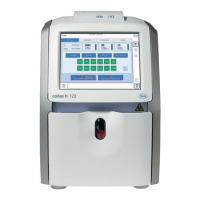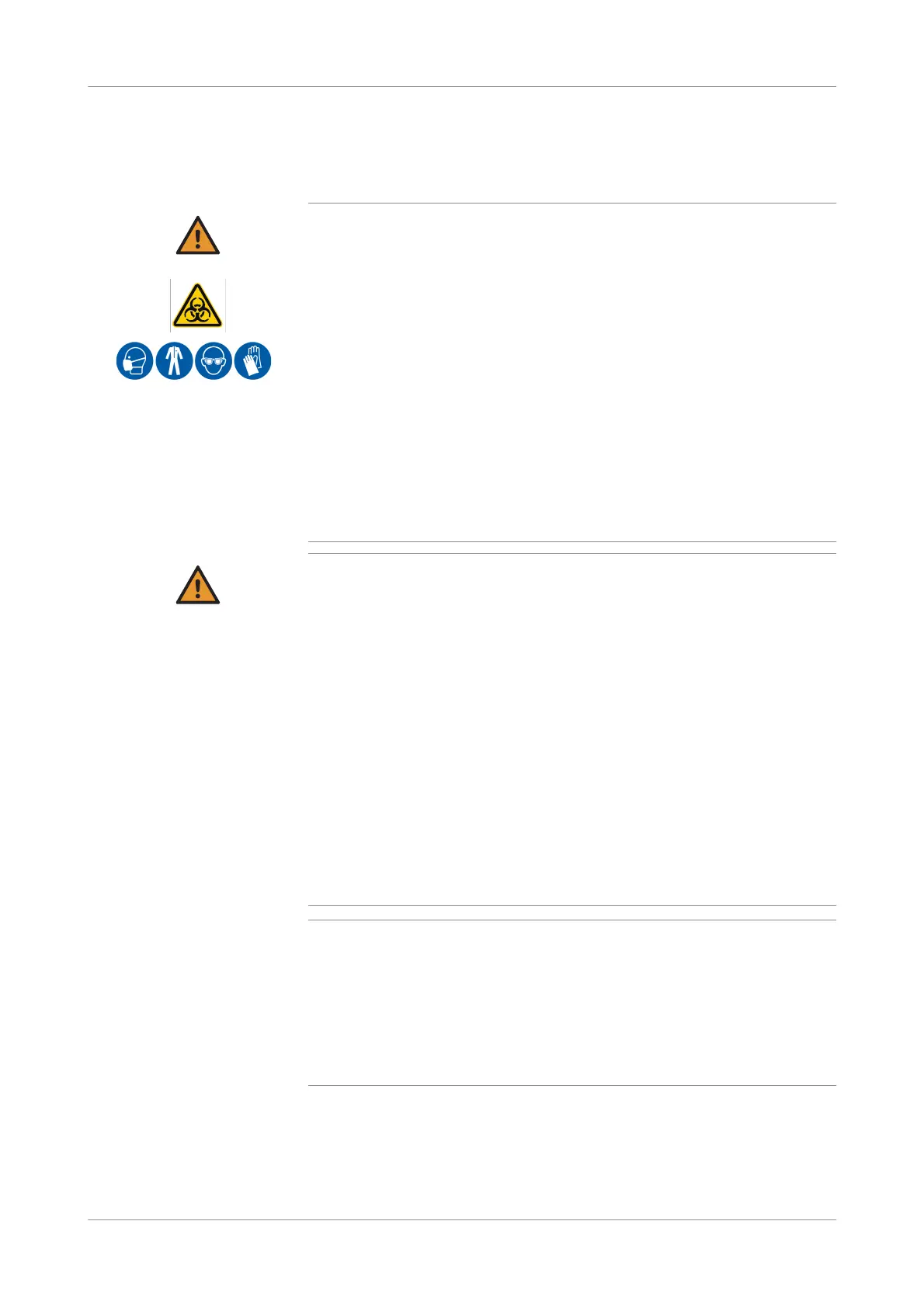Roche Diagnostics
160 Instructions for Use · Version 13.0
6 Measurement cobas b 123 POC system
Performing a measurement
Performing a measurement
WARNING
Inappropriate collecting and handling of samples of human origin may result in
infection
Inappropriate collecting and/or handling samples of human origin may lead to the
transmission of blood or urine borne pathogens.
r Follow standard laboratory practices.
r Prevent direct contact by wearing appropriate personal protective equipment, such as:
o Lab gloves
o Lab coat
o Eye protection
o Face shield if there is a chance of splashing or splattering
r If a sample of human origin is spilled, wipe it up immediately and apply a disinfectant.
r If a sample of human origin comes into contact with your skin, wash the affected area
immediately with soap and water an apply a disinfectant. Consult a physician.
WARNING
Failure to follow QC protocols or ignoring QC results may lead to incorrect patient
results
Failure to follow QC protocols or ignoring QC results may lead to incorrect patient results,
which may endanger patient lives.
r Follow quality control practices according to local regulations.
r Perform a minimum of one QC measurement each day. In addition, alternate through
the 3 levels of available QC materials over the course of 3 days. For example, perform a
QC measurement on day 1 with a level 1 QC material, on day 2 with a level 2 QC
material and on day 3 with a level 3 QC material.
r Perform QC tests on 3 levels after each of these actions: Fluid Pack and
Sensor Cartridge replacement, and installing and turning on the instrument.
r If QC results do not match their expected results, perform the QC measurements again.
If QC results still do not match their expected results, refer to the QC troubleshooting
section (QC troubleshooting (p. 218)). If the error persists, contact your Roche Service
representative.
r Do not use the system for diagnostic purposes until QC results match their expected
results.
NOTICE
Using non-heparinized syringes or syringes with liquid heparin may lead to
inaccurate patient results
Non-heparinized syringes and syringes filled with liquid heparin, whose volume exceeds
the sample volume, does not prevent blood clotting in the syringe. Blood clots compromise
the integrity of the blood sample, which may lead to inaccurate patient results. In addition,
it may clog the instrument’s tubing paths.
r Use syringes containing balanced heparin salts. Roche recommends using the
Roche MICROSAMPLER PROTECT for blood collection.

